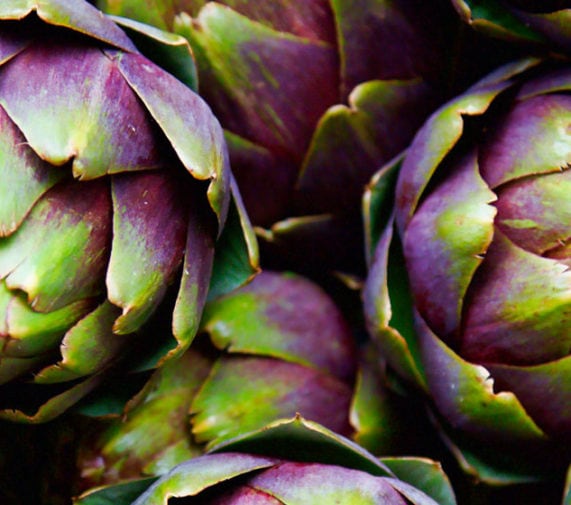With winter finally behind us, it’s time to lighten up—literally. Spring is made for sloughing off dead winter skin, brightening up your wardrobe and eating better after months of stews, soups and comfort food. Lucky for us, spring offers some of the best vegetables, fruits, and proteins that make healthy eating easy and delicious—go for them from mid-April to early June, when they’re at their peak of freshness and nutritional value.
Asparagus
Why: Green, white, purple—it doesn’t matter what color your asparagus is, it’s all good for you. While the vegetable is available throughout the year, getting the first shoots in spring result in the sweetest, most tender vegetable. High in antioxidants and low in calories, a mere half cup of the stalky vegetable is packed with vitamins A, C, and K, plus folate, potassium, which helps lower blood pressure, and tons of fiber. (And, yes, it’s true: Asparagus will make your pee smell weird.)
What to do with it: The question isn’t what to do with asparagus, but what can’t you do with it. Steam, grill, saute and throw into any salad, pasta, frittata, quiche, serve on toast or pizza or eat on its own. One super easy way to prepare: Cut off the ends—bend the bottom until it snaps, and that’s the place to make the cut—put on a baking sheet, toss with a tablespoon or so of olive oil, salt and pepper, and roast in a 400-degree oven for 15 to 20 minutes.
Watercress
Why: This little plant with round leaves almost looks like the ground cover, but it has a long and storied past that goes back to ancient Greece—Hippocrates himself grew wild watercress to treat blood disorders—and was listed on the menu at the first Thanksgiving. Coming from the Brassicaceae family of vegetables, the same as kale, Brussels sprouts, and cabbage, watercress is full of nutrients like immune-supporting vitamins A and C and especially in vitamin K for good bone health. It’s so good for you, it’s listed high on the US Centers for Disease Control’s Powerhouse Fruits and Vegetables list.
How to use: Watercress has a slightly peppery crunch, so it’s best eaten or used in a raw state. Add to salads, use in place of lettuce on salads or in wraps or serve on the side of a lean protein such as fish or chicken. Martha Stewart has a great watercress pesto recipe for pasta. Of course, it’s great in smoothies and even better in this cucumber watercress smash cocktail from Bevvy.
Artichokes
Why: It may look funny, but this spring favorite is packed with antioxidants and dietary fiber—one medium artichoke has almost 7 grams, one-quarter of the recommended daily amount. It’s low in calories and high in folate, vitamins C and K, magnesium and potassium. Artichokes also have a significant amount of protein for a vegetable. There’s a reason they’ve been a staple of the Mediterranean diet for centuries.
How to use: With their spiky leaves and funky shape, artichokes seem daunting to cook at home. But it’s actually quite simple (here’s a good YouTube tutorial). Steam and halve them, then tear off the petals one by one, dip in a light lemon aioli and scrape the tender ends with your teeth. Scoop out the heart and finish that last. Artichokes can also be grilled—delicious served with prosciutto a la Napa chef Michael Chiarello—or braised, served in salads, pasta or rice bowls or even on a pizza.
Fava Beans
Why: Also known as broad beans, fava beans are one of the best things about spring, and they’re loaded with minerals like potassium, magnesium, iron, and zinc. They’re a great source of fiber and protein and are super low in fat. Find them at the farmers market or in most grocery stores. If you’re lucky, you’ll even find them already shelled.
How to use: The investment in preparation is worth the reward. Open the large pods, which are long and floppy, to reveal individual pale green or white beans. That outer shell also needs to be removed to get to the edible bright green jewel. Think of it as a little kitchen meditation. Look to the Mediterranean for the best uses, such as a salad with fava beans, lemon and olive oil, with some fresh sheep’s cheese shaved on top. Or how about sauteed with other springtime vegetables—think green peas and leeks—for a delicious side dish? Or try a fava bean hummus, like this one offered by the James Beard Foundation.
Strawberries
Why: If you’re in California, strawberry season is an absolute celebration. Farmers markets teem with different varieties, every restaurant has them on the menu and there are strawberry festivals along the central coast. Eight of the little heart-shaped fruits pack a punch of fiber, Vitamin C, folate, and potassium, making them good for your digestion, skin, and bones. They’re low in calories, too.
How to use: If you can manage to not eat an entire basket of just-picked strawberries before you even leave the market, add to smoothies, cereal or oatmeal, and in salads, like this classic spinach salad from Spruce Eats. On the sweet side, put on top of ice cream or frozen yogurt, make this excellent quick bread from Martha Stewart or pair with its springtime BFF rhubarb for pies and cakes.
twistup
Love OrangeTwist? Join our twistup membership and receive a $100 gift card today!


